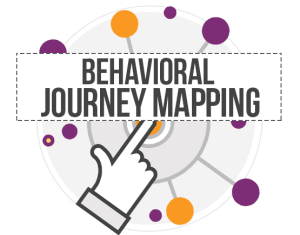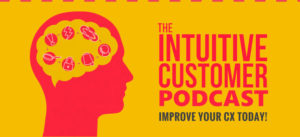I live in Sarasota, Florida, and recently, there have been some interesting changes to the public benches. Halfway along the seat, there are armrests.
At first, I thought it was to make them more comfortable than they were without an armrest in the middle. However, I learned the armrests were there to dissuade the homeless population from sleeping on public benches. It dawned on me that these armrests were a form of Choice Architecture.
We discussed Choice Architecture on a recent podcast and how it could be affecting your Customer Experience. Choice Architecture is nudging people in one particular direction by the way you arrange or present the options. If you’re trying to persuade people or get them to change their behavior, there are several different approaches you could take.
For example, the city of Sarasota could have stepped up fines, although, I’m reasonably sure this would not have been effective for the homeless. They could have stepped up enforcement at night to go and check the benches. They could have had a widespread persuasive campaign of billboards up around explaining to people how it was unhygienic or unsafe to sleep on park benches.
Instead, they created these physical barricades. The interesting bit about putting the armrest halfway down this seat was I thought it was to enhance the seat experience, making it more comfortable with the armrests. The armrest simultaneously made it more attractive for the bench’s preferred use and less attractive for its undesired use.
The Many Forms Choice Architecture Takes
Choice Architecture takes many forms. In my example, it’s an armrest down the middle of the bench. However, it could also be the words to use on the packaging, pricing, or the sizes you offer and what you call them.
In a choice that exists only in our minds, like choosing a restaurant for lunch, the order I list the options could influence your decision. Website layouts and shelf life also contribute towards Choice Architecture’s effects.
Choice Architecture is part of many of the decisions you make each day, as well as some you only make once in a lifetime. These situations include:
- Buffet Lines: The food at the front of the buffet, the ones you first encounter with an empty plate tend to be the less expensive items so you will fill your plate with those. In other words, rolls and chips at the front, Prime Rib at the end, when ostensibly your plate is full.
- Car Rental Insurance: In the past, rental car insurance was framed as an add on to the experience. Now, the wording regarding rental car insurance has changed to emphasize the thousands in additional liability you accept by opting out of the car insurance. It makes it harder to check the “no” box after reading about $20,000 of additional financial responsibility, doesn’t it?
- Restaurant Menus: Many restaurants leave the dollar sign off the price of the menu items. When you include the “$” in front of the cost, people perceive the meal as more expensive. This way is one of many Choice Architecture is at work in the menu at dining establishments.
- Brexit: The ballot for the Brexit vote read, “Should the United Kingdom remain a member of the European Union or leave the European Union?” As you know, the voters in the UK said they should leave back in 2016. Critics of the ballot’s wording suggest that the binary choice was misleading and the vote might have been different if they presented the options about Brexit differently.
- Movie Theatre Popcorn: Outside of a movie theatre, would you ever spend $15 for a tub of popcorn that is too large to consume? Neither would I, but I do at the movies. Plus, it’s only a dollar more than the smaller, more-reasonably sized option, which makes the jumbo-size seem like a bargain by comparison.
Choice Architecture and Organ Donation
Nobel Prize winner Richard Thaler’s and Cass Sunstein’s book Nudge: Improving Decisions About Health, Wealth, and Happiness detailed another example regarding organ donation. In the U.S., organ donation is what is called Explicit Consent, which means that you have to take steps to donate. This default option means that the status quo is not to donate and you take extra steps to donate your organs, should you no longer need them (ahem). However, some countries frame organ donation as Presumed Consent, which position organ donation as the status quo, meaning everyone is donating organs and you have to opt-out to keep a hold of yours after you are gone.
In an experiment in 2003, researchers Eric Johnson and Dan Goldstein discovered that positioning the choice of organ donation as Explicit Consent or Presumed Consent made a significant difference in organ donation rates. When study participants had to opt in to organ donation, the Explicit Consent option, 42% did so. However, when participants had to opt-out of organ donation, the Presumed Consent option, 82% of people chose to stay donor (meaning only 18% opted out). Also, there was a third option where no default for organ donation was given, and 79% of people opted into donation here, as well.
That was a study, of course, so the stakes were not very high. The researchers were not going to show up at any of the participant’s houses shortly after the participant’s demise with a saw and a Styrofoam cooler. However, real-world results show that the Presumed Consent option has more success than Explicit Consent. Germany, which uses an Explicit Consent system, only has 12 percent of its citizens as organ donors while Austria, which uses a Presumed Consent system, has a 99 percent rate of organ donation.
The psychology of the Choice Architecture is at work here. Opting in makes organ donation seem like something you should be passionate about, or at the very least have a definite opinion about because you have to choose to do it. If you instead opt-out of organ donation, it makes you feel as if everyone is doing it and you should only opt-out if you have strong feelings about not doing it. The subtle difference between the Choice Architecture here creates a massive change in people’s behavior.
What You Must Know about Choice Architecture in Your CX
A couple of principles about Choice Architecture are essential to keep in mind when designing it into your Customer Experience strategy.
- It would be best if you still allow maximum freedom of choice while nudging people in the appropriate direction. With the organ donation example, it is beneficial for society for people to donate organs. There is always more demand for organs than organs available to donate. However, people should be able to opt-out if they have reasons why they do not want to donate organs.
- There is no neutral choice architecture. Anything you do will affect the choice outcome, whether you are doing it on purpose or not. If you consider the restaurant buffet, there is no way to natural way to lay out the buffet. Any order you put the food in will change the way people load their plates. Whatever you do, you are affecting your customer’s behavior, so be deliberate about it in your design for a way that benefits you both.
- It would be best if you were honest in your presentation. Do not design anything that guides people down completely the wrong path for them. Your customers will not come back if they do not trust you.
One of the things that we do for clients in our global Customer Experience consultancy is what we call a Customer Mirror, which is where we have your experience as if we were a customer and then give you feedback on it.
During a Customer Mirror, we look for subconscious signals that your current Customer Experience sends. For example, the pens on chains in a bank that suggest customers are going to steal the pen. Often, we see that organizations don’t know the problems they cause with subliminal messages they send customers, usually quite by accident.
Be thoughtful and deliberative about Choice Architecture. After all, you are already presenting your choices to customers in a way that nudges them toward a decision.
Choice Architecture is in everything you do for your customers. The words you use, the display you design, the physical location of things all affect how your customers make decisions.
I would encourage you to examine how you present your options. After all, you should know if you are doing it well or poorly. Fail to fix it, and you could be sitting on a public bench in Sarasota, Florida wondering where you are going to sleep now.

Behavioral Journey Mapping takes regular Journey Mapping to the next level. Learn how you can use our proprietary process to design an experience that meets the subconscious and emotional needs of customers in your experience at every moment along the way. Not only that, by using principles of psychology, we can uncover your customers’ hidden desires. To learn more, click here.

Hear the rest of the conversation on How Choice Architecture Can Revolutionize Your Experience on The Intuitive Customer Podcast. These informative podcasts are designed to expand on the psychological ideas behind understanding customer behavior. To listen in, please click here.
If you enjoyed this post, you might be interested in the following blogs and podcasts:
MEMORY CUES – EXCELLENT CX IS USELESS IF NO ONE REMEMBERS IT
HOW YOUR CUSTOMERS’ IDENTITY ISSUES ARE AFFECTING YOUR CX
ARE YOU IGNORING A KEY PART OF YOUR DIGITAL EXPERIENCE?
Colin Shaw is the founder and CEO of Beyond Philosophy, one of the world’s leading Customer experience consultancy & training organizations. Colin is an international author of six bestselling books and an engaging keynote speaker.
Follow Colin Shaw on Twitter @ColinShaw_CX
Sources:
Colignatus, Thomas. “The Brexit referendum was flawed in its design.” Blogs.lse.ac.uk. 17 May 2017. Web. 9 July 2019. < https://blogs.lse.ac.uk/brexit/2017/05/17/the-brexit-referendum-question-was-flawed-in-its-design/>
Thaler, Richard H., and Cass R Sunstein. Nudge: Improving Decisions About Health, Wealth, and Happiness. Rev. and expanded ed. New York: Penguin Books, 2009. Print.


